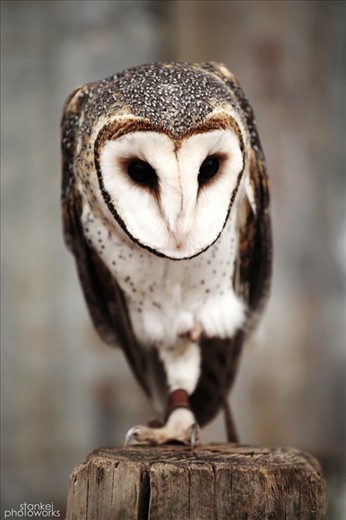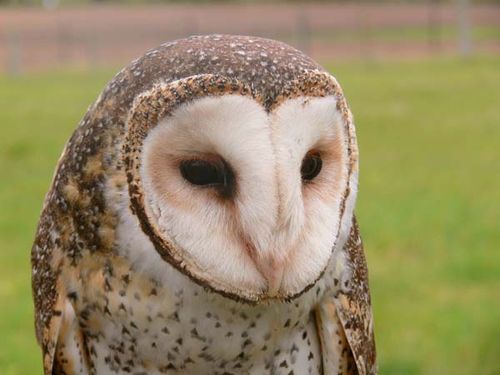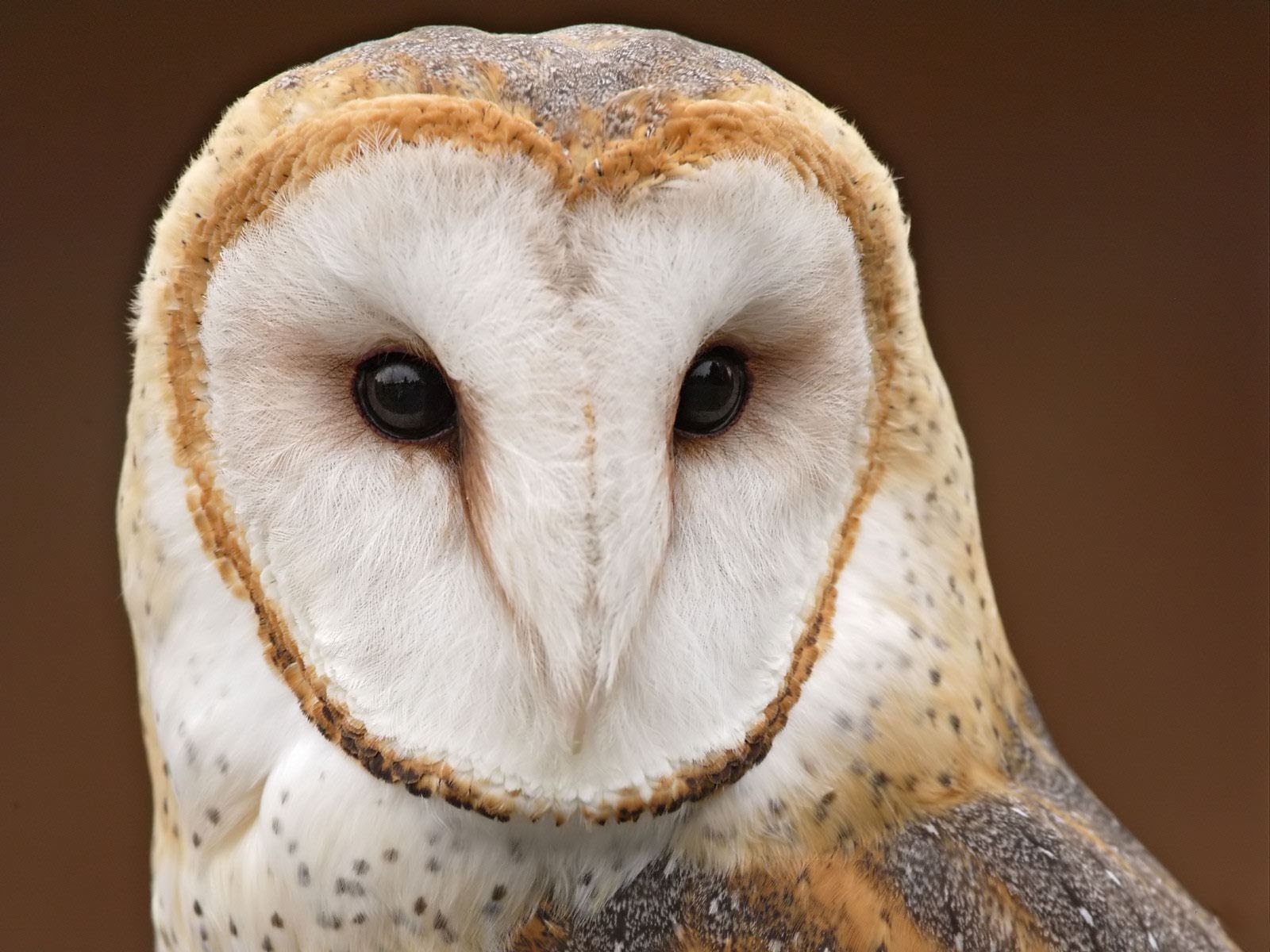
Tyto novaehollandiae
SUBFAMILY
Tytoninae
TAXONOMY
St[rix]? Novae Hollandiae Stephens, 1826, New South Wales.
Five or six subspecies recognized; doubtfully valid T. n. galei
usually merged with kimberli, and Tasmanian castanops sometimes
regarded as full species. Forms species complex with
other masked owls in Melanesia and east Indonesia: golden
masked owl (T. aurantia) in Bismarck Archipelago, Manus
masked owl (T. manusi) in Admiralty Island, lesser masked owl
(T. sororcula) in southern Moluccan and Tanimbar islands, Taliabu
masked owl (T. nigrobrunnea) in Sula Islands, and Minahasa
masked owl (T. inexspectata) in northern Sulawesi.
OTHER COMMON NAMES
English: Masked/tasmanian masked/chestnut-faced/cave owl;
French: Effraie masquйe; German: Neuhollandeule; Spanish:
Lechuza Australiana.
PHYSICAL CHARACTERISTICS
Male 13–17 in (33–42 cm), 0.9–1.8 lb (420–800 g); female
15–22 in (38–57 cm), 1.2–2.8 lb (545–1260 g). Large, pale or
dark owl with large eyes set in rounded facial disc, large feet.
Mottled brown and rufous (orange-brown to reddish brown)
dorsally with rufous underside, or mottled gray and buff dorsally
with white underside. Wings barred, underside finely
spotted. Female larger. Juvenile has downy head and thighs
when first fledged.
DISTRIBUTION
Two or three subspecies peripheral in continental north,
northeast and south Australia; one subspecies in Tasmania; one
subspecies on islands off northern Australia; and one subspecies
in southern New Guinea.
HABITAT
Tall, grassy forest and woodland, often near open country, extending
into treeless areas where there are caves.
BEHAVIOR
Nocturnal, solitary, secretive. Roosts in tree hollows, dense foliage
in gullies, or in caves. Sedentary. Territorial when breeding,
advertising with a loud, harsh screech. Defends home
range of 1.5–4.2 mi2 (4–11 km2).
FEEDING ECOLOGY AND DIET
Preys mostly on terrestrial mammals, especially rodents, which
it detects by watching and listening from perches.
REPRODUCTIVE BIOLOGY
Monogamous. Laying recorded in most months, but usually
autumn to spring. Nests in tree hollow. Clutch 1–4 eggs, usually
two or three, incubated for 33–35 days. Fledge at two
months.
CONSERVATION STATUS
Widespread, but uncommon to rare. Listed on Appendix II of
CITES. Two continental Australian subspecies are classified as
Near Threatened and two island subspecies (Tasmania and
Northern Territory) are Endangered under the Australian Environment
Protection and Biodiversity Conservation Act.
SIGNIFICANCE TO HUMANS
Prominent in the old-growth forest debate in Australia in
the 1990s, as an indicator species for sustainable logging practices.
Other popular Animals
Photo Gallery of - Australian masked owl




 Animalia Life
Animalia Life